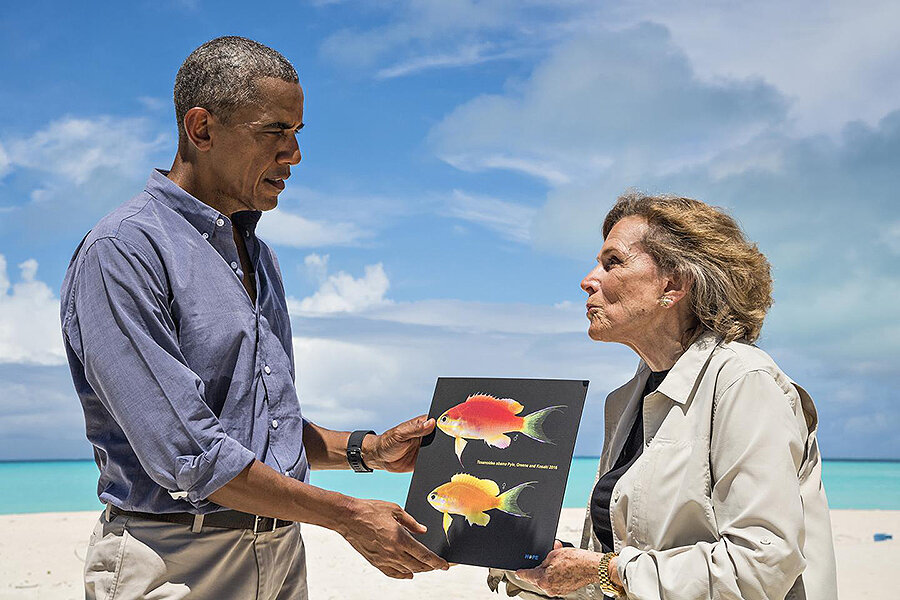Why does this vibrant fish bear President Obama’s name?
Loading...
You might guess that this fish – which is covered in vibrant streaks of pink, yellow, and blue – would be named after David Bowie or Katy Perry. Instead, researchers named it after President Obama.
The reef-dwelling fish was discovered during an expedition in the Papahānaumokuākea Marine National Monument, a reserve located in the Northwestern Hawaiian Islands that President Obama dramatically expanded earlier this year as he capped off his conservationist legacy. In a study published Wednesday in the journal ZooKeys, researchers from the National Oceanic and Atmospheric Administration (NOAA), the Bishop Museum in Honolulu, and the Association for Marine Exploration named the fish Tosanoides obama.
“We decided to name this fish after President Obama to recognize his efforts to protect and preserve the natural environment, including the expansion of Papahānaumokuākea,” the study's lead author, Richard Pyle, a scientist at the Bishop Museum in Honolulu, Hawaii, said in a statement. “This expansion adds a layer of protection to one of the last great wilderness areas on Earth.”
Further analysis showed that T. obama was a type of basslet, a group which includes the chromatic fishes often sold in the aquarium trade. The 2.4-inch fish is found among diverse but rarely-studied coral reefs, living at depths of about 300 feet.
“The new fish is special because it is the only known species of coral-reef fish endemic to the monument [meaning that the species is found nowhere else on Earth],” said co-author Randall Kosaki, who is NOAA's deputy superintendent of Papahānaumokuākea, in a statement. “Our research has documented the highest rate of fish endemism in the world – 100 percent – living on the deep reefs where we found this new species.”
It’s not the first time that the president has inspired new nomenclature. Earlier this year, a retired biologist discovered a new species of parasitic flatworm that he called Baracktrema obamai. The designation was intended to be a compliment, he said, calling the creature "phenomenally, incredibly resilient."
Another parasite, discovered in 2012 near the birthplace of Mr. Obama’s father in Kenya, was dubbed Paragordius obamai. The president’s name has graced a number of other critters, too: the spider Aptostichus barackobamai, the extinct lizard species Obamadon gracilis, and the Etheostoma obama spangled darter fish, among others.
Though many fall into the creepy-and-crawly category, each namesake represents a tribute to Obama’s conservation legacy. In the waning days of his administration, the president has used his executive powers to create sprawling national monuments and vast marine reserves.
In August, he expanded the Papahānaumokuākea Marine National Monument to 582,578 square miles, nearly quadrupling its original size. The reserve is now the second-largest ecological sanctuary on the planet.
In February, Obama transformed nearly 2 million acres of California backcountry into three new national monuments. He was able to do so unilaterally – without Congressional approval – with the help of the Antiquities Act, a strategy that some have criticized as federal overreach.
When he expanded the Hawaiian preserve that is home to his newest namesake, Obama said that the area contains "geological and biological resources that are part of a highly pristine deep sea and open ocean ecosystem with unique biodiversity and that constitute a sacred cultural, physical, and spiritual place for the Native Hawaiian community."






